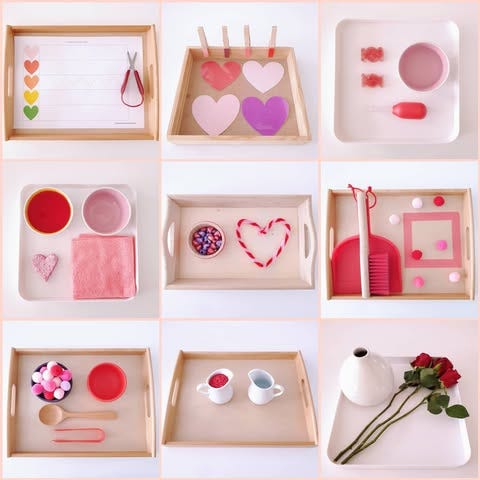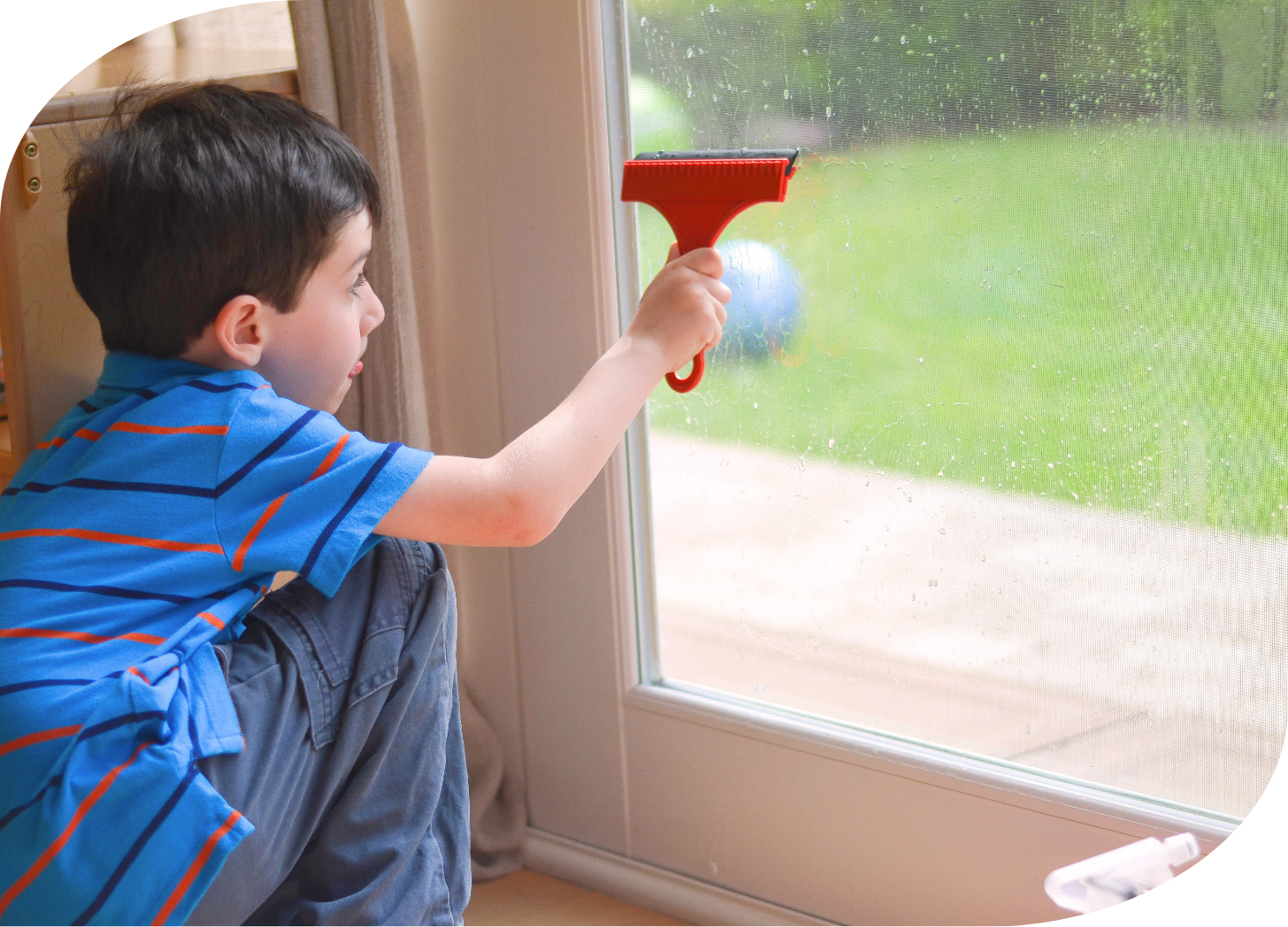Everyone thinks Montessori is expensive. They’re wrong.
How to start Montessori at home, sans overwhelm
If you learn about Montessori from social media and nowhere else, you might come to the incorrect conclusion that Montessori is mostly about stuff.
You might think it’s about going to Dollar General and setting up countless activities (like transferring pom poms from one dish to another in the name of fine motor control). Or about beautiful (a.k.a., expensive) wooden toys. Or about fully functional, toddler-sized IKEA kitchens, complete with running water.
Or about the perfect playroom setup:
These are all wonderful things, and they can be inspiring to look at — but they’re not required to do Montessori at home.
So if you’ve been avoiding Montessori because you’re overwhelmed, or you think Montessori is too expensive, or you don’t know where to start, then we’ve got good news for you.
One of the most effective Montessori activities you can do at home is completely free. And it can easily fold into your existing life, without much upfront energy or planning.
It’s called, aptly, practical life.
What is practical life?
Practical life is a branch of the Montessori curriculum that is exactly what it sounds like: activities that a child will encounter in daily life. It encompasses all the tasks and processes a person needs to be able to do to live, day-to-day.
These activities help children build two very important qualities:
Executive functioning skills (i.e., the ability to focus, do things in order, plan ahead, be resilient, etc.)
Self-esteem
But to access these benefits, the activity must be real, AND it must be meaningful.
This is why activities like dropping small toys into a muffin tin don’t fall into the category of practical life. While these activities might teach hand-eye coordination or fine motor control, that’s all they teach. They don’t offer a child the opportunity to build executive functioning skills or self-esteem, because it isn’t real or meaningful.
In other words, practical life activities let children prove to themselves that they are capable of acting in the world, achieving their needs, and being successful humans (just like their parents and older siblings).
When it’s a real task that matters, the consequences matter, too. If you spill juice, there’s a mess that has to be cleaned up. If you don’t carry a glass cup with two hands, it could fall and break.
You could drop the pom poms, but nothing will happen. So, a child won’t employ the same kind of care, focus, and attention to complete that activity — and they won’t get the same feeling of self-esteem from accomplishing it.
The best part about practical life is that it can easily be done at home. That’s where so much of the “doing” of life happens — the preparing of meals, the washing of dishes, the caring for the self.
So, here’s how to get started at home:
How to do practical life at home
One of the joys of practical life activities is that they’re genuinely interesting to young children. You might notice that your toddler is attempting to copy you by pouring milk… but tends to spill it on the counter. Or maybe they consistently watch in awe as their older siblings tie their shoes. These are clues as to what an appropriate challenge for your child might be.
Once you know what your little one is interested in learning, take a moment to show them how to complete the task. Use as few words as possible; let your actions speak.
If you’re teaching them how to pour, show them how you hold the pitcher over the glass (and how to hold the glass when they’re ready to take a sip). If you’re teaching them how to put on their jacket, show them how to hold the fabric taught so it’s easier to zip.
After this initial lesson, give your child plenty of space to practice the new skill. They’ll still need help or verbal reminders from time to time, but gradually, they’ll be able to take on more and more of the task. In Montessori classrooms, this includes gathering materials, setting up, and cleaning up, too.
Another practical life activity that kids enjoy is cooking. We love it because it’s easy to steadily increase the complexity of the task over time, from placing carrots on a plate to following the recipe for a full meal.
When in doubt, always use child-sized materials (a small pitcher and glasses, small cooking utensils, etc.) and modify your environment to give your little one the best chance of success (e.g., a stool so they can reach the countertop).
This is the essence of Montessori at home: simple, meaningful, and real.
Join us for a free Valentine’s craft event at Guidepost!
At Guidepost locations across the country, we’ll be hosting open houses this month with engaging crafts and lessons suitable for all children. If you’ve been curious about our schools, now is the time to see what we do for yourselves!
Know somebody who would love Guidepost? Refer a friend and get $1000 off your tuition.
To find an open house near you, check your local Guidepost’s website.
☀️ This week’s bright spots:
If you have one minute… Watch our video on developmentally appropriate chores by age, from babies to teenagers.
If you have five minutes… Get 75+ practical life ideas for 1-year-olds.
If you have ten minutes… Read our blog for more ideas on how to implement practical life at home.













